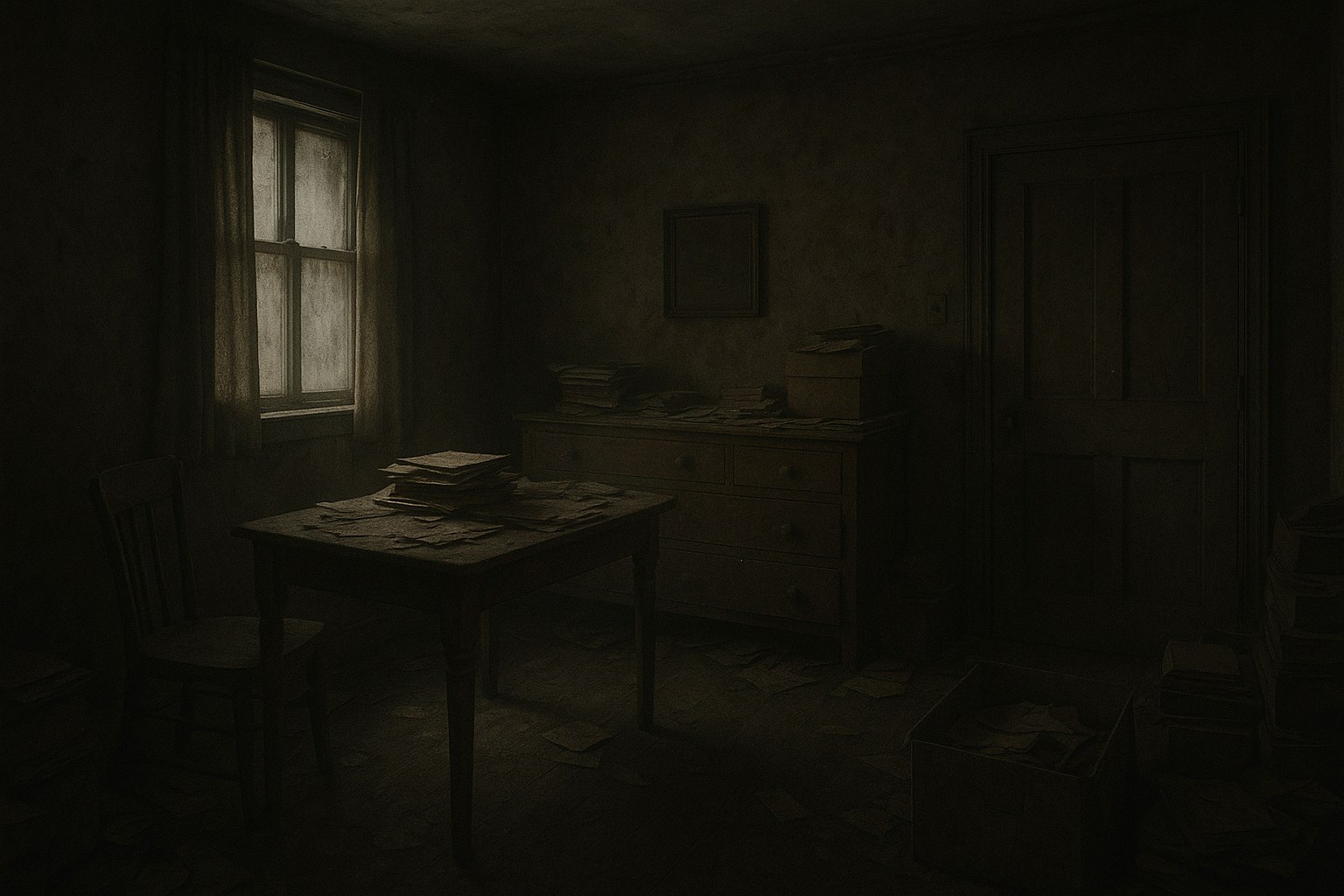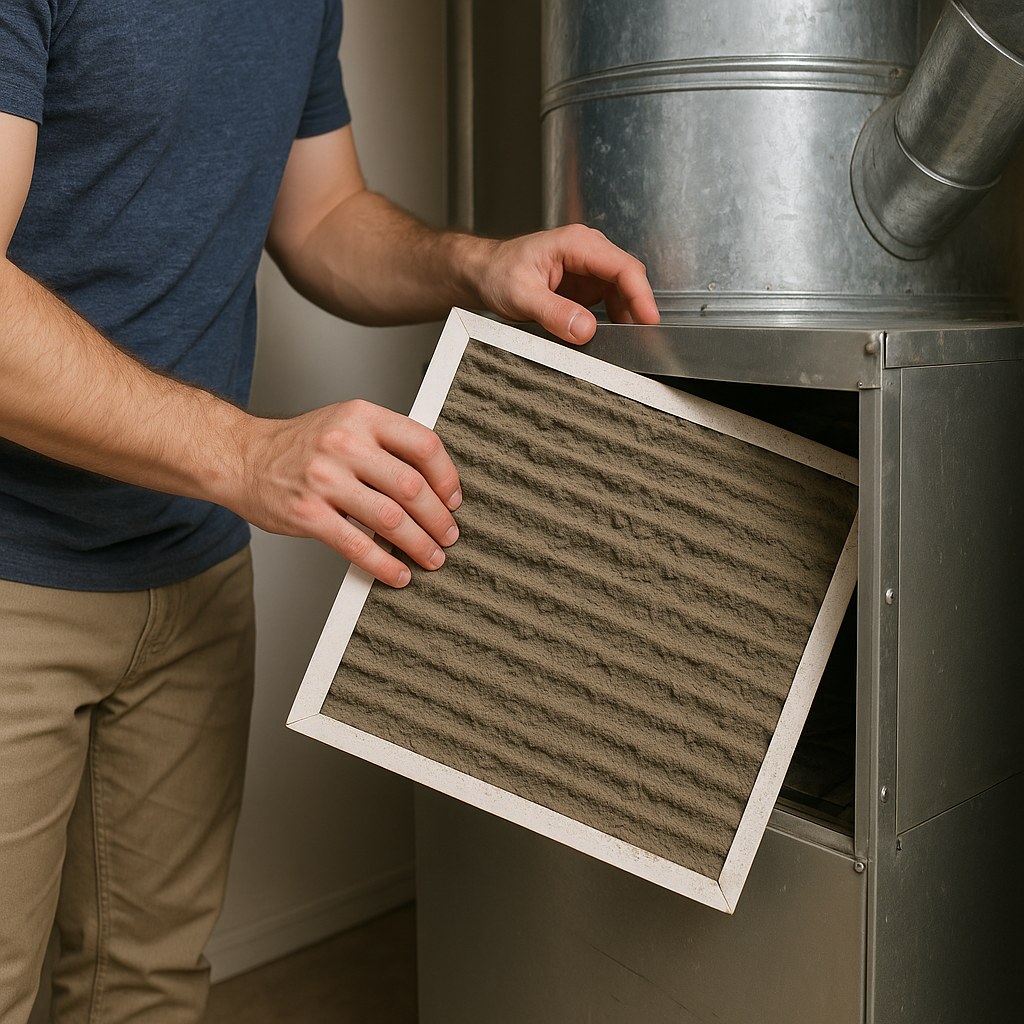How to Fix Bad Airflow in One Room
Does your home have that one room? You know the one—it’s always a few degrees warmer or colder than the rest of the house, feels stuffy, and never seems to get a fresh breeze. Whether it’s a spare bedroom, a home office, or even your own bedroom, dealing with poor airflow is frustrating and can impact everything from your comfort to your sleep quality.
The good news is that you can often solve this common household problem yourself without calling in a professional. A stuffy room is usually a symptom of a simple issue, like a blocked vent, a dirty filter, or a lack of natural circulation.
In this guide, we'll walk you through the process of diagnosing and fixing bad airflow, step-by-step. Let’s get that room feeling fresh and comfortable again!

Why Good Airflow Matters
Before we dive into the fixes, let's quickly talk about why you shouldn't ignore a stuffy room. Good air circulation does more than just regulate temperature. It's crucial for maintaining healthy indoor air quality. Proper airflow helps to:
- Reduce pollutants and allergens: It cycles out dust, dander, and other airborne particles.
- Prevent moisture buildup: Stagnant air can lead to condensation, which encourages mold and mildew growth.
- Improve comfort: Consistent air movement helps maintain an even temperature throughout your home.
Now, let’s figure out what’s causing the problem in your room.
Step 1: Is the Problem in One Room or the Whole House?
First things first, we need to determine the scope of the issue. Is the poor airflow confined to a single room, or is your entire HVAC system underperforming? This simple test will point you in the right direction.
- Go to a room that feels comfortable and has good airflow. Stand near the air vent (if you have central air) or an open window.
- Feel the airflow. Place your hand in front of the vent or window and get a sense of how strong the breeze is.
- Return to the problem room and repeat the test in the same spot (near the vent or window).
If you notice a significant difference, with the problem room having much weaker airflow, then the issue is likely localized. However, if you find that all the rooms in your house have weak airflow, you probably have a system-wide problem.
Step 2: How to Fix Whole-House Airflow Issues
If you've discovered that multiple rooms are suffering from weak airflow, the culprit is almost always related to your central HVAC system. Here are the two most common causes and how to fix them.

1. Check and Replace Your Air Filter
Your HVAC system’s air filter is its first line of defense, trapping dust, pollen, and other debris. Over time, it gets clogged, and a clogged filter is like trying to breathe through a pillow—it severely restricts airflow. According to the U.S. Department of Energy, a dirty filter can reduce your system's efficiency by up to 15%.
How to Fix It:
- Turn your thermostat completely off.
- Locate your air handler, which is usually in a utility closet, basement, or attic.
- Open the filter access panel (you might need a Phillips screwdriver).
- Slide the old filter out. If it looks gray, dusty, or clogged, it's time for a new one.
- Slide in a new pleated air filter of the exact same size. Make sure the arrows on the filter frame point in the direction of the airflow.
- Close the panel and turn your system back on.
You should be changing your filter every 1-3 months, depending on your home's needs (e.g., if you have pets or live in a dusty area).
2. Unblock Your Air Return Vents
Your HVAC system works in a loop. It pushes conditioned air out through supply vents and pulls old air back in through larger return vents. If these return vents are blocked, the system can't get enough air to circulate, leading to weak airflow everywhere.
How to Fix It:
- Walk through your home and locate all the return air vents (they are larger than supply vents and don't have a lever to close them).
- Move any furniture, curtains, rugs, or boxes that are blocking them. You need to leave at least a foot or two of clear space around each return vent.
After changing the filter and clearing the return vents, let your system run for 10-15 minutes. If airflow has improved throughout your home, you’ve likely solved the problem!
Step 3: How to Fix Airflow in a Single Room
If your diagnosis pointed to a single problem room, it's time to do some sleuthing in that space. The solution will depend on whether the room has HVAC vents or relies on natural ventilation.
Option A: For Rooms with HVAC Vents
If the room is connected to your central air system, the issue is likely a blockage or an incorrect setting right there in the room.
- Clear Obstructions: Just like with return vents, make sure furniture, rugs, or boxes aren't sitting on top of or in front of the supply vent.
- Clean the Vent Grille: Dust and debris can build up on the vent cover itself. Turn the system fan on at the thermostat. Then, using a Phillips screwdriver, remove the vent grille. Use a vacuum with a brush attachment to clean both the grille and as far as you can reach into the ductwork (about a foot). Screw the grille back on.
- Check the Damper: Most vents have a small lever that opens and closes a flap inside the duct called a damper. Make sure this lever is in the fully open position. It’s easy for these to get accidentally knocked closed during cleaning.
- Check the Air Return Path: For air to come into a room, old air needs a way to get out. Often, the only return path is the gap under the door. If the door is a tight fit to the floor, it can stifle circulation. Try keeping the door slightly ajar. If that helps, you might consider trimming a small amount off the bottom of the door to create a permanent gap.
After these steps, feel the airflow again. In most cases, one of these simple adjustments will make a world of difference.
Option B: For Rooms Without HVAC Vents
What if the room has no vents and relies on windows for ventilation? You'll need to create your own airflow. This is all about encouraging cross-ventilation—creating a path for fresh air to enter and stale air to exit.

- Use a Window Fan: Open the window and place a box fan inside it, facing outward. This will pull the warm, stale air out of the room.
- Open the Door: Prop the room’s door open. This allows cooler, fresher air from the rest of the house to be drawn into the room to replace the air being pushed out by the fan.
- Leverage Your Ceiling Fan: If you have a ceiling fan, make sure it’s spinning in the right direction. In the summer, the blades should rotate counter-clockwise to push air down and create a cooling breeze. In the winter, switch it to clockwise to pull air up, which helps circulate the warmer air that collects near the ceiling.
Running this setup for just 15-20 minutes can completely refresh the air in a stuffy room.
When to Call a Professional
If you’ve tried all the DIY steps above and your room still feels like a sauna (or an icebox), you might be facing a more complex issue. It’s time to call a licensed HVAC technician if:
- You suspect there’s a blockage deep inside your ductwork.
- You think your ducts might be leaking, crushed, or disconnected in the attic or crawlspace.
- Your HVAC system itself seems weak or is making strange noises.
A professional service call typically costs between $100 and $250, and a technician can diagnose problems with your duct design, blower motor, or refrigerant levels that are beyond the scope of a DIY fix.
Breathe Easy with Casa
A comfortable room with fresh, clean air is essential for a happy home. By following these troubleshooting steps, you can solve most common airflow problems yourself in under an hour.
For more easy-to-follow home maintenance guides and instant access to expert help when you need it, download the Casa app. We’re here to empower you to take control of your home, one simple fix at a time.

